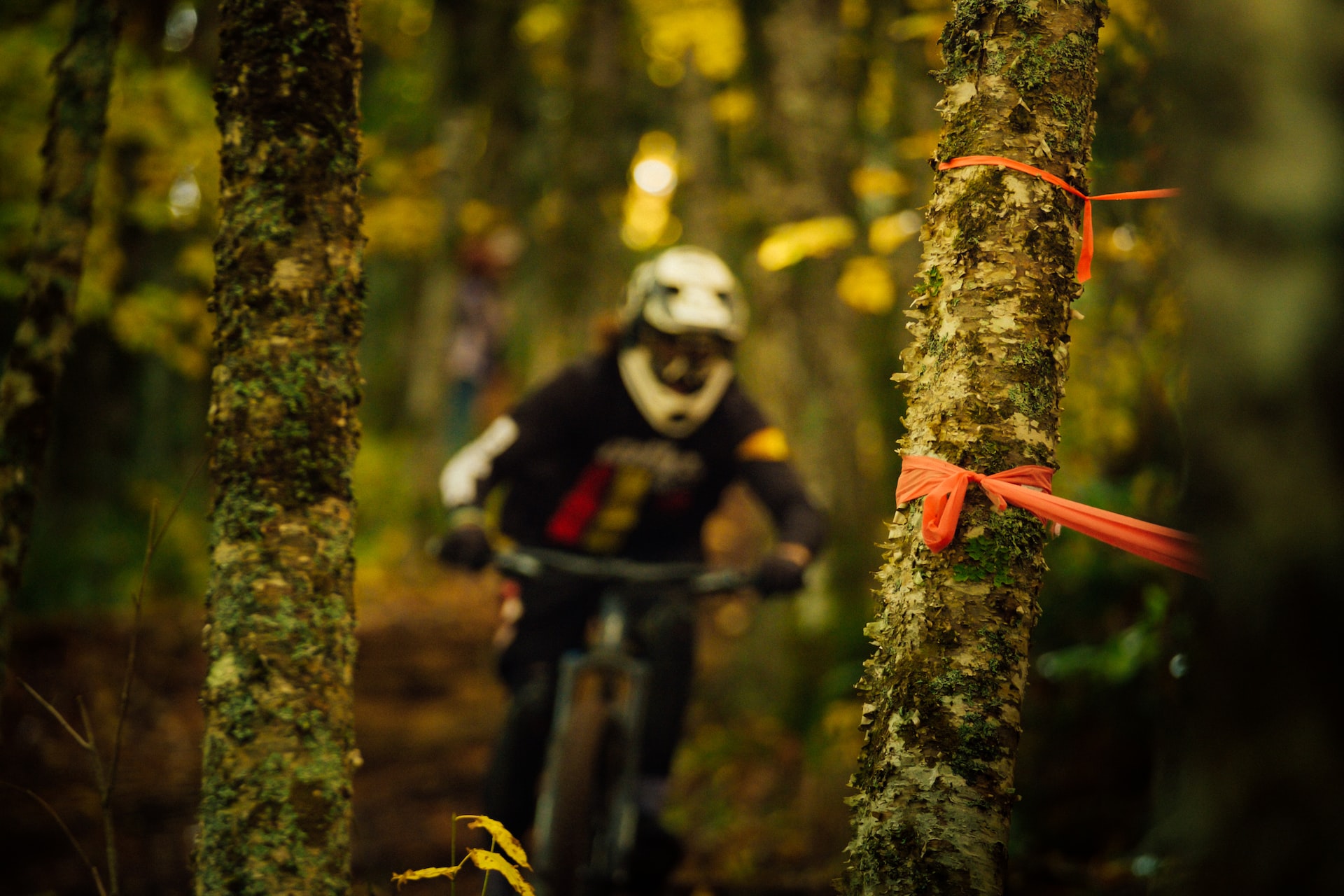If you are an avid mountain biker, you know that pushing yourself to the limit can be physically demanding. Developing your endurance is vital to get the most out of your rides and making your descents smoother and faster. Building endurance is about more than just pushing your limits – it’s about having the power and sustainability to take on longer rides and bigger descents. In this article, we’ll look at strategies to help you build endurance for longer rides and more significant drops. We’ll cover proper pacing, nutrition, and recovery techniques to help you develop the strength and stamina to carve out bigger, bolder rides.
Select the Appropriate Bike
Having the right bike is essential when building endurance for longer rides and more arduous descents. Before purchasing a bike, consider your current fitness, skill level, and experiences. If you are starting and have never ridden a bicycle before, look for an entry-level bike with stable geometry and brakes that are easy to operate. On the other hand, if you are an experienced cyclist, you can look for a bike with more features and advanced components for improved performance.
Choose a Bike Based on Your Goals
Once you have considered your skill level and experience, the next step is choosing a bike based on your goals. If you want to ride on flat trails and roads, you should look for a bike with wide tires to provide good grip and traction on surfaces like gravel or dirt. If you want to tackle steeper and rougher terrain, opt for a full-suspension mountain bike equipped with adjustable travel and bigger wheels for smoother rides.
Check the Bike’s Durability
It’s crucial to pick a bike that’s durable and reliable. Inspect the materials used and make sure they are of good quality. Check the frame and components to ensure they are sturdy and won’t easily break under pressure. It’s also essential to ensure the bike you choose is the right size. The bike’s fit can affect your performance and comfort levels while riding.
Test Out the Bike First
Once you’ve narrowed down your options and selected a few bikes that fit your needs, it’s a good idea to test them before making a purchase. This will help you get a better feel for the bike and ensure it can handle the terrain you plan to ride. If you cannot test the bike yourself, you can ask for recommendations from other experienced cyclists or reach out to the bike shop for advice.
Optimize your Riding Position
Having the correct seat height and fore/aft position on your bike can increase your endurance for longer rides and bigger descents. If your seat is too low, you can fatigue quicker, but if your seat is too high, you can lose power. To find the best fit for you, adjust your seat height so that your knees are slightly bent at the bottom of each pedal stroke. Then move your seat forward or backward until your feet are directly below your knees when the pedals are at their lowest point. This will ensure your power is put to the pedals as efficiently as possible.
Adjust Your Handlebars
After setting your seat position correctly, the next thing to do is to adjust your handlebars. If your handlebars are too low, your back will be bent, and you won’t be able to generate as much power as you could with a higher setting. On the other hand, if they are too high, you will be taxing your arms and shoulders too much, leading to fatigue during your longer rides. To optimize your position, adjust your handlebars, so they are slightly lower than your saddle. This will help keep your back straight and allow you to generate maximum power when pushing the pedals.
Minimize Weight on Your Hands and Arms
When riding long distances, you want to minimize the weight on your hands and arms. This can be accomplished by adjusting your handlebar reach and stem length. If your shoulders are tense and your arms are tired, you may need to change these components to make your riding position more comfortable and reduce the stress on your arms and hands.
Create a Comfortable and Efficient Riding Position
Creating a comfortable and efficient riding position for your longer rides and bigger descents is essential to building your endurance. By taking the time to adjust your seat height and fore/aft position, handlebars, and handlebar reach and stem length, you can optimize your riding position, minimize fatigue, and increase your power and endurance. With the proper riding position, you’ll easily tackle longer rides and bigger descents.
Warm-up Before Rides
Riding a bike is a form of exercise that can help you build endurance for more extended and extensive rides. But it is essential to understand the importance of preparing your body for the ride by warming up beforehand. A warm-up is critical to helping you reach your peak performance and ensuring that your body is physically and mentally prepared for the ride.
Stretching and Mobility Exercises
Before you begin your ride, doing some stretching and mobility exercises is vital to get your body ready for the ride. Focussing on your lower body by stretching your hamstrings, quads, calves, and hip flexors are ideal. Make sure to hold each stretch for at least 20-30 seconds and repeat the periods twice. Doing dynamic mobility exercises, such as lunges, bodyweight squats, mountain climbers, etc., will also help activate your muscles and prevent aches and pains during the ride.
Activating Your Core Muscles
A strong core is essential for a successful ride, as it helps you provide stability and control on the bike. Core exercises such as planks, side planks, bird dogs, and dumbbell rows can help activate your core muscles. This will help you keep your posture correct while riding and maintain control of your bike while on technical terrain.
Increasing Your Heart Rate
Once you have completed your stretches and mobility exercises, getting your heart rate up before the ride is vital, this can be done by doing some light cardio exercises such as jogging, jumping jacks, or even biking. Doing this will help increase your heart rate, allowing your body to get used to the increased activity and get ready for the ride ahead.
Ride Specific Exercises
Doing ride-specific exercises such as sprints, hill climbs, and intervals can also be beneficial in building endurance for longer rides and bigger descents. These exercises mimic the terrain you will be encountering and help you get used to the intensity changes you will experience during the ride.
Following these tips and doing an adequate warm-up before your ride will increase your endurance, build strength, and improve your overall riding ability. This will ensure you have a successful lift and can enjoy the trails and descents easily.
Increase Training Volume
Training in intervals is a great way to increase endurance and prepare your body for longer rides and bigger descents. Interval training involves alternating periods of high intensity with periods of rest or low power, which helps to increase your aerobic capacity and improve your performance. Interval training should be done twice a week with a day of rest. Each session should consist of 3-5 sets of 1-5 minutes of high intensity, followed by a few minutes of rest or lower power.
Mix up Your Routes
Mixing up your routes can help improve your endurance and prepare your body for longer rides. When riding, try to challenge yourself by mixing up the terrain, including hills, flats, and technical sections. This will help improve your riding capabilities and endurance.
Strength Training
Incorporating strength training into your training routine can help you build muscular strength and endurance. Strength training exercises such as squats and lunges can help build muscular strength in your legs, which will help you to push harder during your rides and help you to power through long rides.
Eat a Balanced Diet
A balanced diet can help fuel your rides and keep your body in top form. Eating a balanced diet that includes plenty of fruits, vegetables, lean meats, whole grains, and healthy fats can help provide your body with the necessary vitamins and minerals to perform at its best.
Stay Hydrated
Staying hydrated is essential for proper performance and endurance. Make sure to drink plenty of water before, during, and after your rides to ensure that you are properly hydrated. It would help if you also considered carrying some electrolyte drinks to help replenish lost electrolytes.
Increase Training Intensity
Increasing your training intensity is important when it comes to building endurance and strength for longer rides and bigger descents. After all, it is the only way to build endurance for longer rides and descents. Here are some easy steps to help you increase your training intensity safely and effectively:
Interval Training
Interval training is a great way to maximize your gains in cardiovascular endurance. During interval training, you alternate periods of intense exercise with lower-intensity exercise. This type of workout not only helps you to build endurance but also increases your aerobic capacity. Interval training may include cycling, running, jumping rope, or swimming.
Strength Training
Strength training helps to build muscle endurance, which is essential for making the endurance necessary for long rides and big descents. A combination of aerobic and strength training is the best way to maximize your gains. Strength training can include weightlifting, body weight exercises, and strength circuits.
Rest and Recovery
Rest and recovery are essential parts of any training program. Without adequate rest and recovery, your body does not have enough time to rebuild and repair damaged muscle fibers. Make sure to schedule sufficient rest time into your routine. Also, don’t forget to stretch and perform self-massage to help the body recover from intense training sessions.
Train Smart
When increasing your training intensity, it is important to train smart. Start slowly, gradually increasing the intensity and duration of your workouts. It is also essential to listen to your body. If you are feeling fatigued, take a break. Pushing yourself too hard can lead to overtraining and injury.
By following these easy steps, you can safely and effectively increase your training intensity, building the endurance and strength needed for longer rides and bigger descents.
Consume Enough Calories
When building endurance for longer rides and bigger descents, consuming enough calories is vital. Carbs are your body’s preferred energy source for endurance activities, so aim for foods rich in complex carbohydrates. A sports nutritionist can provide a tailored meal plan to ensure you get enough of the right macronutrients to fuel your rides.
How Many Calories to Consume?
Calorie and macronutrient requirements for endurance riding vary depending on an individual’s body composition, age, gender, and activity level. Speaking to a nutritionist is the best way to determine your individualized calorie needs and the best food sources to meet those needs to help you succeed in building the endurance you need.
As a general guideline, if you aim to increase your endurance capacity, you should consume at least 2,200 calories per day if you’re male and 1,800 if you’re female. If you’re engaging in many endurance activities, you may need to increase your calorie intake to meet your energy needs.
Protein for Recovery
Protein, composed of amino acids, is also vital for endurance athletes to stay healthy and recover effectively. Protein-rich foods, such as lean meats, fish, tofu, eggs, nuts, and legumes, can help repair muscle damage and rebuild healthy tissue. To optimize your recovery, eat 20-30 grams of protein per meal, or ~1 gram of protein per kilogram of body weight.
Fluid and Electrolyte Balance
Staying hydrated is essential for both short and long rides. However, it is even more critical when you embark on a longer ride. Dehydration can lead to headaches, fatigue, and a decrease in performance, so it’s vital to bring fluids and replenish your electrolytes to prevent dehydration.
Sports drinks can help you replenish lost electrolytes during and after a ride. They also provide additional carbohydrates and added flavor to make hydrating more enjoyable. As a rule of thumb, aim to drink 8-10 ounces of fluid, such as water and a sports drink, every 15-20 minutes while you’re riding.
Nutrition for Endurance Training
Maintaining an adequate nutrition plan is essential to building endurance for longer rides and bigger descents. Eating the right foods and drinking enough water throughout the day can help optimize your performance and recovery. Sports nutritionists can provide tailored meal plans to help you get the nutrients your body needs to fuel your rides.
Incorporate Indoor Cross-training
Optimizing your endurance on longer rides and bigger descents starts with building strength and conditioning your body. Incorporating indoor cross-training into your mountain biking routine can help you do that. Cross-training exercises like squats, lunges, planks, and burpees can increase and maintain core muscle strength, which is essential for off-road riding. You can also target specific muscle areas with alternating exercises such as yoga or Pilates with light weights and resistance bands.
Optimize Your Eating Habits
Your eating habits should be considered as part of your training to gain endurance. You should fuel your body with carbohydrates, proteins, and healthy fats for long-distance rides. Eating a balanced diet will help ensure you have enough energy to perform at your best. If you are spending a lot of time on the bike, replenish electrolytes and hydrate regularly.
Train with Longer Rides
To build endurance, you should gradually extend the duration of your rides. Start by increasing the length of your rides by 10-15% each week until you reach your desired distance. During the ride, focus on maintaining a steady pace and pay attention to your form. Practicing specific drills on the trail, such as quick sprints or “stop and go” exercises, can help you gain confidence and build strength.
Include Hill Climbs in Your Routine
Hill climbs are an essential part of biking and can provide an excellent opportunity to increase strength and endurance. When attempting a hill climb, maintain good form and use your core muscles to help power your way up. As you progress, you can increase the intensity and duration of your hill climbs to push yourself further and gain greater endurance.
Rest and Recover
It is essential to listen to your body and allow for proper rest and recovery. Working for the same muscle groups on consecutive days can cause injury, so give your body a break. Resting and taking recovery days can help to prevent damage and maximize your performance. You can adjust your training schedule to allow for more strenuous workouts as you progress.
Supplement with Strength Training
For the best results, it’s important to alternate between endurance and strength training when building endurance for longer rides and bigger descents. Endurance training is geared toward having the body become more efficient at sustaining a given effort for extended periods and can include long rides, spinning classes, and running. On the other hand, strength training focuses on building muscle strength and power. It can consist of activities such as weight training, plyometrics, and core workouts.
Weight Training for Cyclists
Strength training is an integral part of any cyclist’s training regimen. Weight training helps improve cyclists’ power, making them faster and more robust overall. Weight training should focus on the core muscles and the legs. Core exercises can improve the cyclist’s ability to stay in a tucked position, which is vital for more intense descents.
Leg exercises should focus on strengthening the quads, hamstrings, and calves. This can be achieved through basic activities such as squats, step-ups, and lunges with either machines or free weights. These exercises should be done with proper form and the addition of repetitions and weight only when the body can do so.
Core Exercises
Core exercises are essential for staying safe while cycling, especially during steep and long descents. Core exercises help to strengthen the abdominal muscles, obliques, and lower back muscles. This supports the core, improving the cyclist’s balance and helping to reduce fatigue. Core exercises can be done with a stability ball or weights, including planks, crunches, and bridge exercises.
Plyometrics for Speed and Endurance
Plyometrics is an explosive exercise designed to increase speed, power, and balance. Plyometrics can help improve the ability to accelerate and climb more efficiently, making descents faster and more enjoyable. Examples of plyometric exercises that can improve cyclists’ speed and endurance include box jumps, jump squats, and calf raises.
Endurance Training
Along with strength training, it’s also essential to focus on endurance training. Endurance training can help to increase the cyclist’s ability to handle longer rides, faster descents, and more intense hills. Endurance training focuses on improving the cyclist’s aerobic capacity by having them ride for more extended periods.
For the best results, endurance training should include rides in various terrain – from flat surfaces to hills and climbs. It should also include intervals of short bursts of high-intensity activity, such as sprints. This helps increase the cyclist’s aerobic capacity, meaning their body can sustain faster for extended periods.
Rest and Recovery
Along with training, it’s also essential to allow the body time to rest and recover. Proper rest and recovery help to ensure that the muscles have time to repair themselves, making them stronger and able to handle more intense descents. It’s also essential to ensure the body is sufficiently hydrated and fueled before and during exercise to help ensure the best possible performance.
Listen to Your Body
It is important to listen to your body and know your limits when building endurance for longer rides and bigger descents. Establishing what your body can and can’t do is endurance’s first and most crucial step. This can be done through trial and error and by adjusting your activity accordingly.
Eat Right for Optimal Performance
The foods you consume are vital when it comes to building endurance. Aim to include nutritious and well-balanced meals in your diet and stay properly hydrated. Try to eat foods rich in proteins, carbs, and healthy fats to help keep your energy levels high.
Rest and Recovery
Rest and recovery time is just as important as the rides themselves. Allowing your body to rest ensures you will be as prepared as possible to perform on your next ride. This can be done by getting proper sleep, eating well, and taking rest days when needed.
Strength Training
Strength training is another excellent way to increase your endurance for longer rides and bigger descents. Exercises such as push-ups, squats, forward lunges, and core exercises will all help to improve your strength and agility.
Cross Train
Cross-training can also be a great addition to your journey of building endurance. Try activities like swimming, yoga, running, and HIIT workouts to add variety and help strengthen your muscles.
Smart Sessions
Finally, ensure that you are smart about your sessions on the trails. Start with shorter rides and gradually increase the distance and difficulty. This will help you build up your endurance and strength over time, allowing you to take on bigger descents confidently.
Take Rest Days
To build endurance for long rides and bigger descents, it’s essential to take rest days to let your body recover. Rest days are necessary to allow your muscles the time they need to repair and rebuild, enabling you to ride faster and more intensely in the future.
Strategically Plan Your Rest Days
Incorporate rest days strategically into your training schedule. For example, take a rest day after a challenging ride or if you feel tired or sore. Alternating between challenging rides and rest days will help maximize the benefits of your training, allowing you to make better progress and set new goals.
Go For Walks or Cross Train
You don’t have to rest entirely on your rest days. If you feel up to it, you can still stay active by walking, swimming, or taking light bike rides. Cross-training is a great way to reap the benefits of exercise without exhausting your muscles. If you’re looking for an endurance workout, swimming and running can help you build endurance without putting too much strain on your body.
Listen To Your Body
Finally, it’s essential to listen to your body when it comes to rest days. If you’re tired or sore, take a rest day and make sure to give your body the rest and recovery it needs. Overdoing it can lead to burnout and injury, so take it easy on those rest days. Regular breaks and resting will help you build endurance for those longer rides and bigger descents.
The Benefits of Improved Endurance
By following the strategies outlined in this article, cyclists are now prepared to tackle longer rides and bigger descents. With consistent effort and a focus on technique, cycling endurance will be improved, and cyclists will be able to last longer and ride further than ever before. Ultimately, increased cycling endurance will enable cyclists to explore more terrain, discover new backroads and trails, and take on more extensive and challenging descents. With improved endurance, cyclists can enjoy every ride to its fullest, find new experiences and personal growth, and form a stronger connection with the open road’s unique culture, beauty, and freedom.






Leave a reply